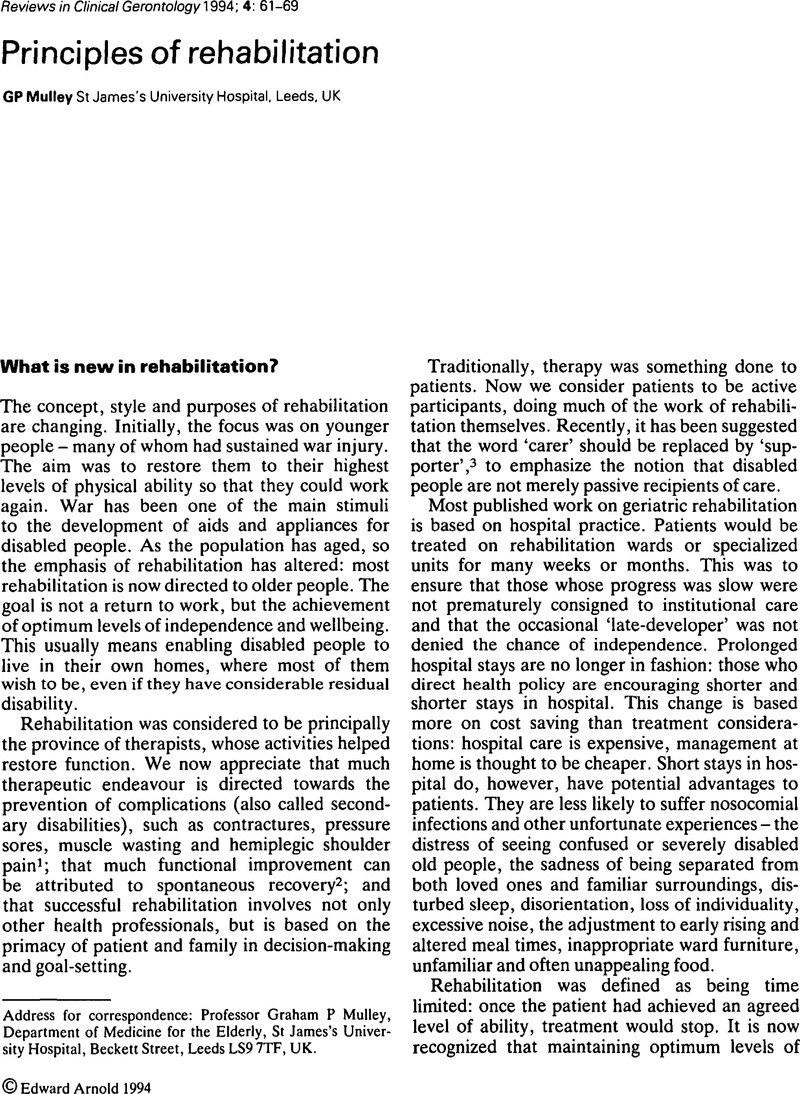Crossref Citations
This article has been cited by the following publications. This list is generated based on data provided by Crossref.
Nolan, Mike
and
Nolan, Janet
1997.
Rehabilitation: realizing the potential nursing contribution.
British Journal of Nursing,
Vol. 6,
Issue. 20,
p.
1176.
Nolan, M.R.
1998.
Outcomes and effectiveness: beyond a professional perspective.
Clinical Effectiveness in Nursing,
Vol. 2,
Issue. 2,
p.
57.
Carpenter, Brian D.
2002.
Family, Peer, and Staff Social Support in Nursing Home Patients: Contributions to Psychological Well-Being.
Journal of Applied Gerontology,
Vol. 21,
Issue. 3,
p.
275.
Huang, Gao
Zhang, Weimin
Meng, Fei
Yu, Zhangguo
Chen, Xuechao
Ceccarelli, Marco
and
Huang, Qiang
2018.
Master-Slave Control of an Intention-Actuated Exoskeletal Robot for Locomotion and Lower Extremity Rehabilitation.
International Journal of Precision Engineering and Manufacturing,
Vol. 19,
Issue. 7,
p.
983.



